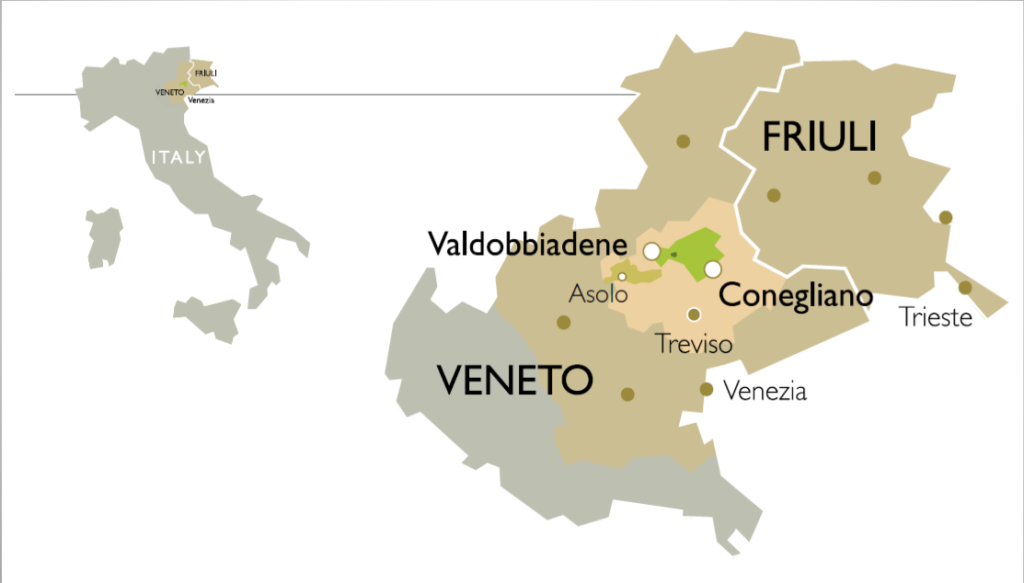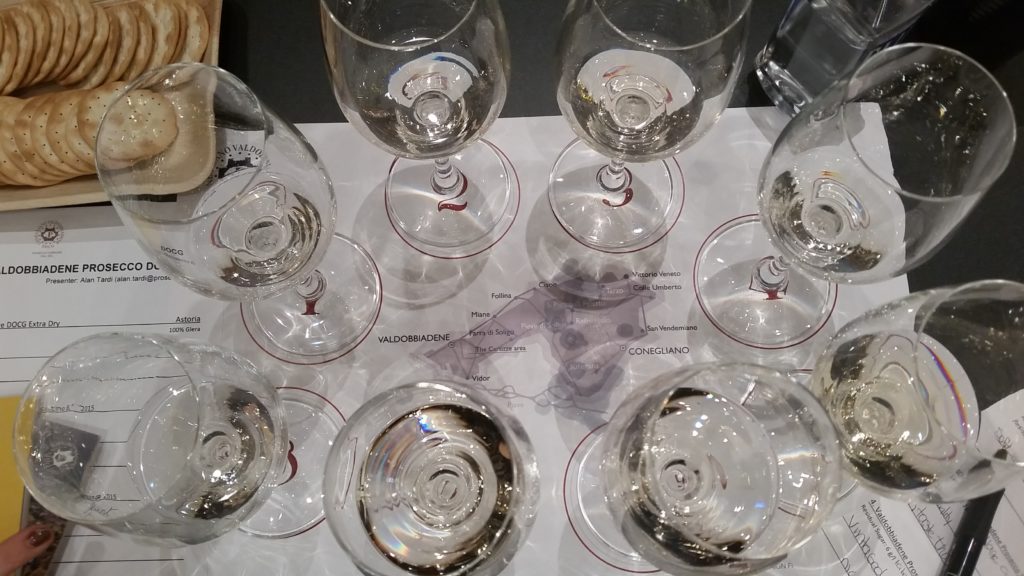The Truth About Prosecco Superiore

Prosecco is probably the most popular sparkling wine these days and it’s been around for centuries. What is Prosecco Superiore and what makes it different. It’s all about the classification and where the grapes are grown.

Prosecco DOC is produced in 9 provinces from Veneto to Friuli Venezia Giulia. There are 356 Prosecco DOC producers and only 183 Prosecco Superiore producers. Prosecco Superiore is the highest level of Prosecco produced. It can only come from the provence of Treviso and the towns of Conegliano and Valdobbiadene which is located 50km from Venice.

The growing region is very complex. The Conegliano region on the eastern hills was formed by glacial activity. They have gently sloping hills of alluvial and morainic soils that consist of small rocks, sand and clay. Over on the western side in Valdobbiadene, unaffected by glacial activity, you have steep hills defined by erosion and ravines. This soil is shallow and of marine origin composed of marls, sandstone, compressed clay and conglomerates with marine deposits.
Made in the Charmat method where the second fermentation takes place in an autoclave (large sealed pressurized tank,) the Prosecco in the bottle labeled DOCG Superiore must be 85% Glera and up to 15% Verdiso, Perera,or Bianchetta. Also permitted in Spumante only are Chardonnay, Pinot Grigio, Pinot Bianco and Pino Nero. Bottling the sparkling wine can only be done in the wineries of the province of Treviso. There is strict quality control performed by a number of organizations at different stages of the production process. The Producers Association the Consorzio di Tutela and the Chamber of Commerce inspect and guarantee the wine’s entire production process. At the end of the inspection the official State issued bottle will have a unique identification number. Each bottle will have its own number.
Terms to know when purchasing a bottle of Prosecco Superiore DOC
- Brut – The driest style. Has residual sugar between 0 and 12 g/l
- Extra Dry – This is the most traditional type of Prosecco. Risidual suger between 12 and 17 g/l.
- Dry – Dry it isn’t. It’s the sweetest style of Prosecco with risidual sugar between 17 and 32 g/l. This is the least wide spread version of Prosecco.
- Millesimato – Vintage Prosecco. The wine comes from the same vintage year
- Rive – All the grapes for the Prosecco come from one of the 43 tows or hamlets designated by the name and the term Rive. These wines must be vintaged dated.
- Cartizze – The grapes must come from the Cartizze subzone and be indicated on the label as “Valdobbiadene Superiore di Cartizze DOCG”
- Superiore – refers only to Spumante (sparkling) Prosecco DOCG
- Spumante (sparkling) Must have 3.5 bars atmospheres of pressure made in the Charmat method.
- Frizzante (fizzy) Must have between 1 – 2.5 bars atmospheres of pressure. This has a gentler bubbles.
- Tranquillo (still) Grapes for this wine come from the most dennsely planted vineyards with the lowest yields. The grapes are harvested at peak ripeness.
Prosecco Superiore is very affordable. Prices range from $15 to $40

Valdobbiadene Superiore di Cartizze DOCG Brut “Vigna La Rivetta” Villa Sandi 2015 – floral notes with apricots, golden delicious apples and hints of citrus. SRP $38
Conegliano Valdobbiadene Prosecco Superiore DOCG Extra Dry Rive di Manzana Fransinelli 2015 – Aromas of wisteria, hints of bread and apple leading to soft elegant fruits. SRP $15

